PCA在 stanford CS229课程里有详细的讲解:
一下是对PCA从各个方面的深入剖析:
Introduction
Principal Components Analysis (PCA) is a dimensionality reduction algorithm that can be used to significantly speed up your unsupervised feature learning algorithm. More importantly, understanding PCA will enable us to later implement whitening, which is an important pre-processing step for many algorithms.
Suppose you are training your algorithm on images. Then the input will be somewhat redundant, because the values of adjacent pixels in an image are highly correlated. Concretely, suppose we are training on 16x16 grayscale image patches. Then  are 256 dimensional vectors, with one feature
are 256 dimensional vectors, with one feature  corresponding to the intensity of each pixel. Because of the correlation between adjacent pixels, PCA will allow us to approximate the input with a much lower dimensional one, while incurring very little error.
corresponding to the intensity of each pixel. Because of the correlation between adjacent pixels, PCA will allow us to approximate the input with a much lower dimensional one, while incurring very little error.
Example and Mathematical Background
For our running example, we will use a dataset  with
with  dimensional inputs, so that
dimensional inputs, so that  . Suppose we want to reduce the data from 2 dimensions to 1. (In practice, we might want to reduce data from 256 to 50 dimensions, say; but using lower dimensional data in our example allows us to visualize the algorithms better.) Here is our dataset:
. Suppose we want to reduce the data from 2 dimensions to 1. (In practice, we might want to reduce data from 256 to 50 dimensions, say; but using lower dimensional data in our example allows us to visualize the algorithms better.) Here is our dataset:
This data has already been pre-processed so that each of the features  and
and  have about the same mean (zero) and variance.
have about the same mean (zero) and variance.
For the purpose of illustration, we have also colored each of the points one of three colors, depending on their  value; these colors are not used by the algorithm, and are for illustration only.
value; these colors are not used by the algorithm, and are for illustration only.
PCA will find a lower-dimensional subspace onto which to project our data. From visually examining the data, it appears that  is the principal direction of variation of the data, and
is the principal direction of variation of the data, and  the secondary direction of variation:
the secondary direction of variation:
I.e., the data varies much more in the direction  than
than  . To more formally find the directions
. To more formally find the directions  and
and  , we first compute the matrix
, we first compute the matrix  as follows:
as follows:
If  has zero mean, then
has zero mean, then  is exactly the covariance matrix of
is exactly the covariance matrix of  . (The symbol "
. (The symbol " ", pronounced "Sigma", is the standard notation for denoting the covariance matrix. Unfortunately it looks just like the summation symbol, as in
", pronounced "Sigma", is the standard notation for denoting the covariance matrix. Unfortunately it looks just like the summation symbol, as in  ; but these are two different things.)
; but these are two different things.)
It can then be shown that  ---the principal direction of variation of the data---is the top (principal) eigenvector of
---the principal direction of variation of the data---is the top (principal) eigenvector of  , and
, and  is the second eigenvector.
is the second eigenvector.
Note: If you are interested in seeing a more formal mathematical derivation/justification of this result, see the CS229 (Machine Learning) lecture notes on PCA (link at bottom of this page). You won't need to do so to follow along this course, however.
You can use standard numerical linear algebra software to find these eigenvectors (see Implementation Notes). Concretely, let us compute the eigenvectors of  , and stack the eigenvectors in columns to form the matrix
, and stack the eigenvectors in columns to form the matrix  :
:
Here,  is the principal eigenvector (corresponding to the largest eigenvalue),
is the principal eigenvector (corresponding to the largest eigenvalue),  is the second eigenvector, and so on. Also, let
is the second eigenvector, and so on. Also, let  be the corresponding eigenvalues.
be the corresponding eigenvalues.
The vectors  and
and  in our example form a new basis in which we can represent the data. Concretely, let
in our example form a new basis in which we can represent the data. Concretely, let  be some training example. Then
be some training example. Then  is the length (magnitude) of the projection of
is the length (magnitude) of the projection of  onto the vector
onto the vector  .
.
Similarly,  is the magnitude of
is the magnitude of  projected onto the vector
projected onto the vector  .
.
Rotating the Data
Thus, we can represent  in the
in the  -basis by computing
-basis by computing
(The subscript "rot" comes from the observation that this corresponds to a rotation (and possibly reflection) of the original data.) Lets take the entire training set, and compute  for every
for every  . Plotting this transformed data
. Plotting this transformed data  , we get:
, we get:
This is the training set rotated into the  ,
, basis. In the general case,
basis. In the general case,  will be the training set rotated into the basis
will be the training set rotated into the basis  ,
, , ...,
, ..., .
.
One of the properties of  is that it is an "orthogonal" matrix, which means that it satisfies
is that it is an "orthogonal" matrix, which means that it satisfies  . So if you ever need to go from the rotated vectors
. So if you ever need to go from the rotated vectors  back to the original data
back to the original data  , you can compute
, you can compute
because  .
.
Reducing the Data Dimension
We see that the principal direction of variation of the data is the first dimension  of this rotated data. Thus, if we want to reduce this data to one dimension, we can set
of this rotated data. Thus, if we want to reduce this data to one dimension, we can set
More generally, if  and we want to reduce it to a
and we want to reduce it to a  dimensional representation
dimensional representation  (where
(where  ), we would take the first
), we would take the first  components of
components of  , which correspond to the top
, which correspond to the top  directions of variation.
directions of variation.
Another way of explaining PCA is that  is an
is an  dimensional vector, where the first few components are likely to be large (e.g., in our example, we saw that
dimensional vector, where the first few components are likely to be large (e.g., in our example, we saw that  takes reasonably large values for most examples
takes reasonably large values for most examples  ), and the later components are likely to be small (e.g., in our example,
), and the later components are likely to be small (e.g., in our example,  was more likely to be small). What PCA does it it drops the the later (smaller) components of
was more likely to be small). What PCA does it it drops the the later (smaller) components of  , and just approximates them with 0's. Concretely, our definition of
, and just approximates them with 0's. Concretely, our definition of  can also be arrived at by using an approximation to
can also be arrived at by using an approximation to  where all but the first
where all but the first  components are zeros. In other words, we have:
components are zeros. In other words, we have:
In our example, this gives us the following plot of  (using
(using  ):
):
However, since the final  components of
components of  as defined above would always be zero, there is no need to keep these zeros around, and so we define
as defined above would always be zero, there is no need to keep these zeros around, and so we define  as a
as a  -dimensional vector with just the first
-dimensional vector with just the first  (non-zero) components.
(non-zero) components.
This also explains why we wanted to express our data in the  basis: Deciding which components to keep becomes just keeping the top
basis: Deciding which components to keep becomes just keeping the top  components. When we do this, we also say that we are "retaining the top
components. When we do this, we also say that we are "retaining the top  PCA (or principal) components."
PCA (or principal) components."
Recovering an Approximation of the Data
Now,  is a lower-dimensional, "compressed" representation of the original
is a lower-dimensional, "compressed" representation of the original  . Given
. Given  , how can we recover an approximation
, how can we recover an approximation  to the original value of
to the original value of  ? From an earlier section, we know that
? From an earlier section, we know that  . Further, we can think of
. Further, we can think of  as an approximation to
as an approximation to  , where we have set the last
, where we have set the last  components to zeros. Thus, given
components to zeros. Thus, given  , we can pad it out with
, we can pad it out with  zeros to get our approximation to
zeros to get our approximation to  . Finally, we pre-multiply by
. Finally, we pre-multiply by  to get our approximation to
to get our approximation to  . Concretely, we get
. Concretely, we get
The final equality above comes from the definition of  given earlier. (In a practical implementation, we wouldn't actually zero pad
given earlier. (In a practical implementation, we wouldn't actually zero pad  and then multiply by
and then multiply by  , since that would mean multiplying a lot of things by zeros; instead, we'd just multiply
, since that would mean multiplying a lot of things by zeros; instead, we'd just multiply with the first
with the first  columns of
columns of  as in the final expression above.) Applying this to our dataset, we get the following plot for
as in the final expression above.) Applying this to our dataset, we get the following plot for  :
:
We are thus using a 1 dimensional approximation to the original dataset.
If you are training an autoencoder or other unsupervised feature learning algorithm, the running time of your algorithm will depend on the dimension of the input. If you feed  into your learning algorithm instead of
into your learning algorithm instead of  , then you'll be training on a lower-dimensional input, and thus your algorithm might run significantly faster. For many datasets, the lower dimensional
, then you'll be training on a lower-dimensional input, and thus your algorithm might run significantly faster. For many datasets, the lower dimensional  representation can be an extremely good approximation to the original, and using PCA this way can significantly speed up your algorithm while introducing very little approximation error.
representation can be an extremely good approximation to the original, and using PCA this way can significantly speed up your algorithm while introducing very little approximation error.
Number of components to retain
How do we set  ; i.e., how many PCA components should we retain? In our simple 2 dimensional example, it seemed natural to retain 1 out of the 2 components, but for higher dimensional data, this decision is less trivial. If
; i.e., how many PCA components should we retain? In our simple 2 dimensional example, it seemed natural to retain 1 out of the 2 components, but for higher dimensional data, this decision is less trivial. If  is too large, then we won't be compressing the data much; in the limit of
is too large, then we won't be compressing the data much; in the limit of  , then we're just using the original data (but rotated into a different basis). Conversely, if
, then we're just using the original data (but rotated into a different basis). Conversely, if  is too small, then we might be using a very bad approximation to the data.
is too small, then we might be using a very bad approximation to the data.
To decide how to set  , we will usually look at the percentage of variance retained for different values of
, we will usually look at the percentage of variance retained for different values of  . Concretely, if
. Concretely, if  , then we have an exact approximation to the data, and we say that 100% of the variance is retained. I.e., all of the variation of the original data is retained. Conversely, if
, then we have an exact approximation to the data, and we say that 100% of the variance is retained. I.e., all of the variation of the original data is retained. Conversely, if  , then we are approximating all the data with the zero vector, and thus 0% of the variance is retained.
, then we are approximating all the data with the zero vector, and thus 0% of the variance is retained.
More generally, let  be the eigenvalues of
be the eigenvalues of  (sorted in decreasing order), so that
(sorted in decreasing order), so that  is the eigenvalue corresponding to the eigenvector
is the eigenvalue corresponding to the eigenvector  . Then if we retain
. Then if we retain  principal components, the percentage of variance retained is given by:
principal components, the percentage of variance retained is given by:
In our simple 2D example above,  , and
, and  . Thus, by keeping only
. Thus, by keeping only  principal components, we retained
principal components, we retained  , or 91.3% of the variance.
, or 91.3% of the variance.
A more formal definition of percentage of variance retained is beyond the scope of these notes. However, it is possible to show that  . Thus, if
. Thus, if  , that shows that
, that shows that  is usually near 0 anyway, and we lose relatively little by approximating it with a constant 0. This also explains why we retain the top principal components (corresponding to the larger values of
is usually near 0 anyway, and we lose relatively little by approximating it with a constant 0. This also explains why we retain the top principal components (corresponding to the larger values of  ) instead of the bottom ones. The top principal components
) instead of the bottom ones. The top principal components  are the ones that're more variable and that take on larger values, and for which we would incur a greater approximation error if we were to set them to zero.
are the ones that're more variable and that take on larger values, and for which we would incur a greater approximation error if we were to set them to zero.
In the case of images, one common heuristic is to choose  so as to retain 99% of the variance. In other words, we pick the smallest value of
so as to retain 99% of the variance. In other words, we pick the smallest value of  that satisfies
that satisfies
Depending on the application, if you are willing to incur some additional error, values in the 90-98% range are also sometimes used. When you describe to others how you applied PCA, saying that you chose  to retain 95% of the variance will also be a much more easily interpretable description than saying that you retained 120 (or whatever other number of) components.
to retain 95% of the variance will also be a much more easily interpretable description than saying that you retained 120 (or whatever other number of) components.
PCA on Images
For PCA to work, usually we want each of the features  to have a similar range of values to the others (and to have a mean close to zero). If you've used PCA on other applications before, you may therefore have separately pre-processed each feature to have zero mean and unit variance, by separately estimating the mean and variance of each feature
to have a similar range of values to the others (and to have a mean close to zero). If you've used PCA on other applications before, you may therefore have separately pre-processed each feature to have zero mean and unit variance, by separately estimating the mean and variance of each feature  . However, this isn't the pre-processing that we will apply to most types of images. Specifically, suppose we are training our algorithm on natural images, so that
. However, this isn't the pre-processing that we will apply to most types of images. Specifically, suppose we are training our algorithm on natural images, so that  is the value of pixel
is the value of pixel  . By "natural images," we informally mean the type of image that a typical animal or person might see over their lifetime.
. By "natural images," we informally mean the type of image that a typical animal or person might see over their lifetime.
Note: Usually we use images of outdoor scenes with grass, trees, etc., and cut out small (say 16x16) image patches randomly from these to train the algorithm. But in practice most feature learning algorithms are extremely robust to the exact type of image it is trained on, so most images taken with a normal camera, so long as they aren't excessively blurry or have strange artifacts, should work.
When training on natural images, it makes little sense to estimate a separate mean and variance for each pixel, because the statistics in one part of the image should (theoretically) be the same as any other. This property of images is calledstationarity.
In detail, in order for PCA to work well, informally we require that (i) The features have approximately zero mean, and (ii) The different features have similar variances to each other. With natural images, (ii) is already satisfied even without variance normalization, and so we won't perform any variance normalization. (If you are training on audio data---say, on spectrograms---or on text data---say, bag-of-word vectors---we will usually not perform variance normalization either.) In fact, PCA is invariant to the scaling of the data, and will return the same eigenvectors regardless of the scaling of the input. More formally, if you multiply each feature vector  by some positive number (thus scaling every feature in every training example by the same number), PCA's output eigenvectors will not change.
by some positive number (thus scaling every feature in every training example by the same number), PCA's output eigenvectors will not change.
So, we won't use variance normalization. The only normalization we need to perform then is mean normalization, to ensure that the features have a mean around zero. Depending on the application, very often we are not interested in how bright the overall input image is. For example, in object recognition tasks, the overall brightness of the image doesn't affect what objects there are in the image. More formally, we are not interested in the mean intensity value of an image patch; thus, we can subtract out this value, as a form of mean normalization.
Concretely, if  are the (grayscale) intensity values of a 16x16 image patch (
are the (grayscale) intensity values of a 16x16 image patch ( ), we might normalize the intensity of each image
), we might normalize the intensity of each image  as follows:
as follows:

 , for all
, for all 
Note that the two steps above are done separately for each image  , and that
, and that  here is the mean intensity of the image
here is the mean intensity of the image  . In particular, this is not the same thing as estimating a mean value separately for each pixel
. In particular, this is not the same thing as estimating a mean value separately for each pixel  .
.
If you are training your algorithm on images other than natural images (for example, images of handwritten characters, or images of single isolated objects centered against a white background), other types of normalization might be worth considering, and the best choice may be application dependent. But when training on natural images, using the per-image mean normalization method as given in the equations above would be a reasonable default.








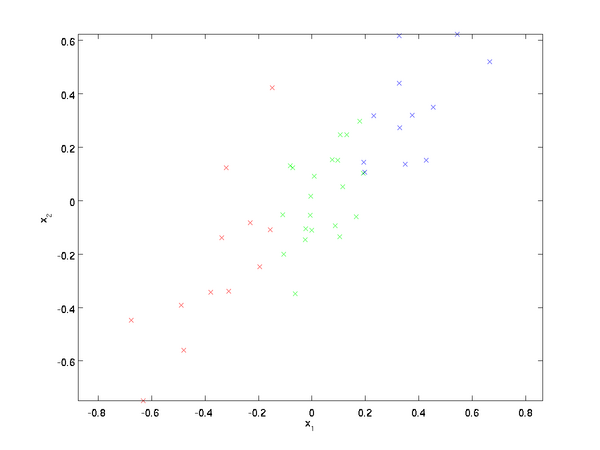
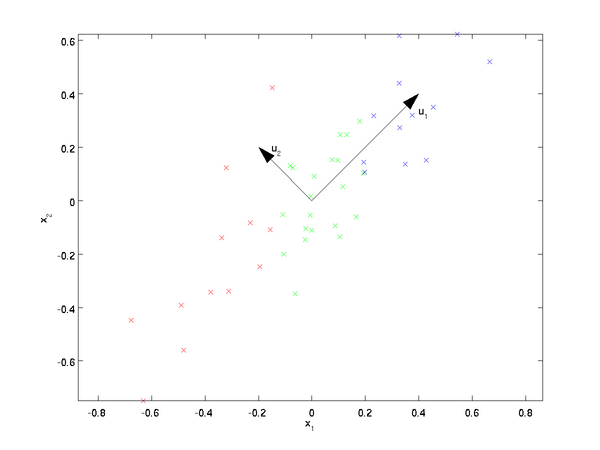






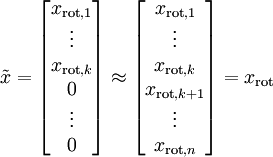
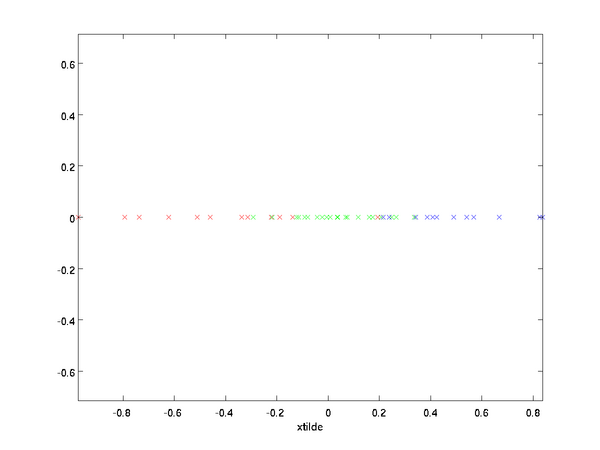
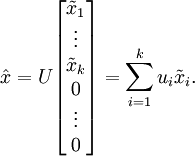
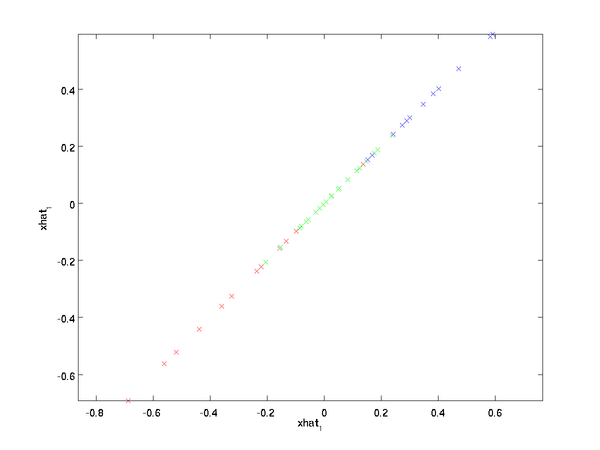















 1661
1661











 被折叠的 条评论
为什么被折叠?
被折叠的 条评论
为什么被折叠?








